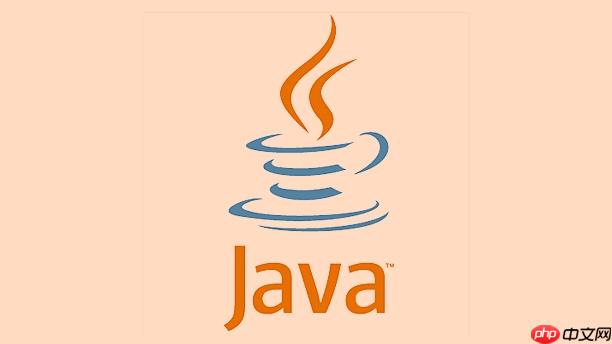自动装箱与拆箱是编译器语法糖,本质调用valueOf和intValue方法,需警惕性能损耗、循环中频繁创建对象及NULL导致的NullPointerException,且Integer缓存-128到127,应使用equals比较对象。

Java的自动装箱与拆箱本质上是编译器提供的语法糖,方便了基本类型和它们对应的包装类型之间的转换。但如果不理解其背后的机制,很容易掉入性能陷阱,或者遇到一些意想不到的NullPointerException。
解决方案
自动装箱就是将基本类型自动转换为对应的包装类型,例如将
int
转换为
Integer
。拆箱则是相反的操作,将包装类型转换为基本类型。
Integer i = 10; // 自动装箱 int j = i; // 自动拆箱
这段代码看起来非常简洁,但实际上,
Integer i = 10;
等价于
Integer i = Integer.valueOf(10);
,而
int j = i;
等价于
int j = i.intValue();
。
Integer.valueOf()
方法会缓存-128到127之间的Integer对象,所以如果你的值在这个范围内,会直接从缓存中取,否则会创建一个新的Integer对象。
自动装箱拆箱的性能影响?
频繁的装箱拆箱会带来性能损耗。尤其是在循环中进行大量的装箱拆箱操作,会创建大量的临时对象,增加GC的压力。
立即学习“Java免费学习笔记(深入)”;
long sum = 0L; for (int i = 0; i < Integer.MAX_VALUE; i++) { sum += i; // i 会被自动装箱成Long,然后拆箱成long } System.out.println(sum);
上面的代码看似简单,但效率很低。每次循环,
i
都会被自动装箱成
Long
对象,然后拆箱成
Long
再进行加法运算。正确的做法是直接使用
Long
类型:
long sum = 0L; for (long i = 0; i < Integer.MAX_VALUE; i++) { sum += i; } System.out.println(sum);
如何避免空指针异常?
由于自动拆箱可能会导致
NullPointerException
,因此需要特别注意包装类型的值是否为
null
。
Integer i = null; int j = i; // 抛出NullPointerException
上面的代码中,
i
为
null
,在执行
int j = i;
时,会尝试对
null
进行拆箱操作,从而抛出
NullPointerException
。
避免这种错误的方法是在使用包装类型时,始终进行
null
值检查。
Integer i = null; int j = (i != null) ? i : 0; // 安全的拆箱
或者使用
Optional
类来处理可能为空的包装类型:
Integer i = null; int j = Optional.ofNullable(i).orElse(0);
Integer缓存机制的影响?
Integer
类内部有一个缓存,用于存储-128到127之间的
Integer
对象。这意味着,如果你的值在这个范围内,那么使用
==
比较两个
Integer
对象时,结果可能是
true
,否则是
false
。
Integer a = 100; Integer b = 100; System.out.println(a == b); // true Integer c = 200; Integer d = 200; System.out.println(c == d); // false
上面的代码中,
a == b
的结果是
true
,因为100在缓存范围内,
a
和
b
指向的是同一个对象。而
c == d
的结果是
false
,因为200超出了缓存范围,
c
和
d
指向的是不同的对象。
因此,在比较两个
Integer
对象时,应该始终使用
equals()
方法,而不是
==
。
Integer a = 200; Integer b = 200; System.out.println(a.equals(b)); // true


评论(已关闭)
评论已关闭